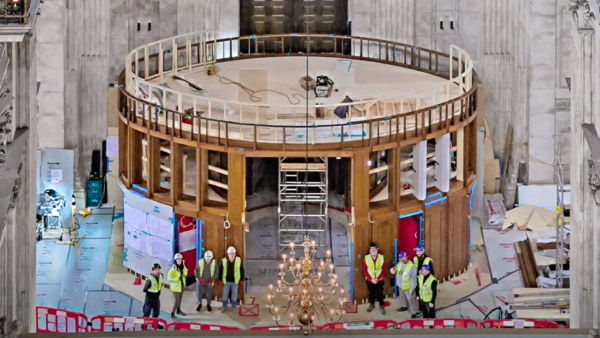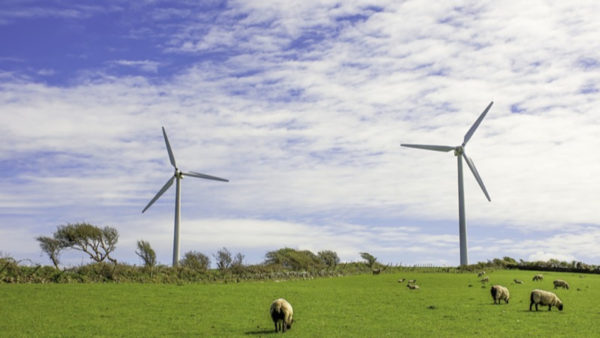
The business development manager of cladding fabricator CEP Architectural Facades, which provided the combustible ACM cassettes used in the refurbishment of Grenfell Tower, knew that a more fire-resistant version of the rainscreen cladding was available, the Grenfell Tower Inquiry has heard.
Geof Blades, a director of the firm between 2004 and 2017 and now retired, was questioned by lead counsel to the Inquiry Richard Millett QC about his witness statement given before the hearing.
In the witness statement, Blades claimed that he did not know at the time of the Grenfell Tower project that the Reynobond rainscreen cladding from Alcoa (later renamed Arconic) was available with both a combustible polyethylene core, as well with as a fire-resistant (FR) core.
He said in his statement: “It was not until after the refurbishment that CEP became aware that Arconic supplied an FR product, namely Reynobond FR.”
But Millett produced an email exchange dated June 2013 between Blades and Richard Geater at another of the ACM suppliers that CEP used, 3A Composites. The exchange related to a different project and Blades asked Geater about the pricing of Reynobond as compared with the pricing of 3A’s product, Alucobond.
Blades told Geater that 3A’s quote was higher than the price of the Reynobond product, which prompted Geater to ask if the Reynobond offer was for a paint-finished product with a fire-resistant core. Blades replied that he “didn’t think so, but didn’t request that spec.”
Millett asked if that meant that in June 2013, Blades did know that Arconic made Reynobond with a fire-rated core but that he just hadn’t asked for it. Blades replied: “Possibly, yes.”
Geater wrote: “That clarifies the price difference. Alucobond has a FR core and PvdF paint system as standard. Alcoa can offer this but they will charge considerably more than £1:30m2.
“Alcoa won’t change their core until they are forced to due to changes in the fire regulations, else Reynobond will become too expensive.
“3A Composites are heavily marketing our FR core and discussing the requirement for fire retardant materials with architects, especially on residential buildings.”
Millett asked Blades: “Now, when you received that, you couldn’t have been in any doubt, could you, that Arconic did make an FR product?”
Blades replied: “Correct.”
Millett asked if Blades was prepared to correct the evidence he gave to the Inquiry earlier on, to which Blades replied he was.
Millett asked Blades if Arconic weren’t selling the FR version of an ACM panel because it would make their ACM product “uncompetitive”. Blades said: “Looking at this, yes.”
Millett continued: “If FR core was available to an architect or a subcontractor, for example, looking at rainscreen ACM, why would they opt to buy a PE core at all where it was to be used over 18 metres?”
Blades replied: “They probably wouldn’t.”
Millett then referred to a witness statement given by Deborah French, a sales representative at Arconic. In her statement, French said it was more usual for customers to order an FR core in Germany. She added: “I do not know the reason for this but I assume it related to the respective regulatory regimes. I would also add that fabricators in the UK did not really like working with FR because it is more difficult and costly to fabricate than PE. For example, it tends to wear down the cutting tools much more quickly than PE. This was a general comment made by fabricators I worked with.”
Blades said he couldn’t confirm whether or not it was right that FR core ACM was more difficult or costly to fabricate because he didn’t get involved in the production side at CEP.
Early discussions with architect
The hearing also heard how Blades had met with Bruce Sounes of architect Studio E for the first time in 2012 to discuss Grenfell Tower. Studio wanted to discuss using zinc rainscreen on the project. Blades said that CEP had never worked with zinc but he brought Deborah French to the meeting because he was aware that Reynobond had a zinc-appearance finish to one of its panels.
Blades said that it became clear in the course of the meeting that Sounes wanted zinc itself. Asked if it was his impression that French promoted the ACM PE product at the meeting over zinc, Blades said that he recalled French promoting both traditional ACM and an ACM product with a zinc skin.
In November 2012, Blades sent an email to French after a conversation with Studio E, stating that the architecture firm was opting for a product called Rheinzink at that stage but that it was still “early days and no firm costs have been provided regarding rainscreen”.
Millett asked if by saying that no firm costs had been provided, it indicated that it was still possible that an Arconic product might be specified.
Blades replied that it did and confirmed that he was trying to encourage French to continue to push for the sale of its ACM Reynobond product.
Blades replied: “Yes…if Reynobond got the job, we would have an opportunity.”









